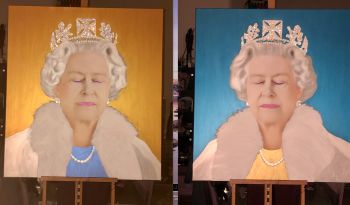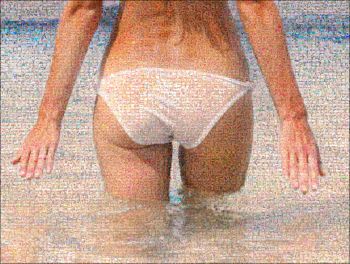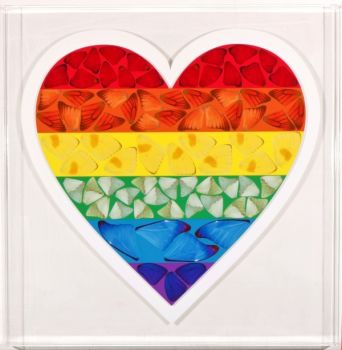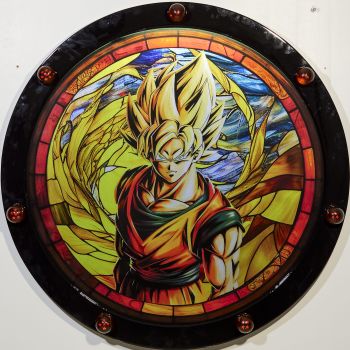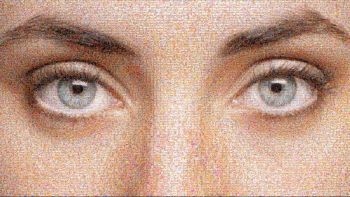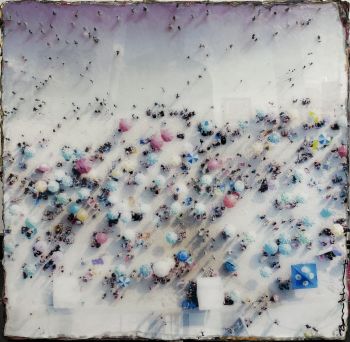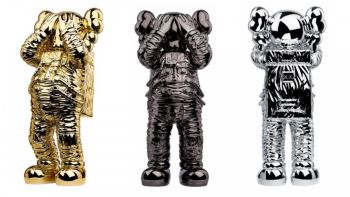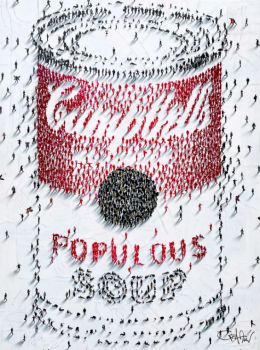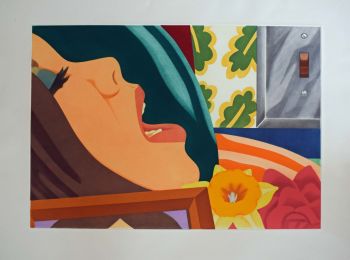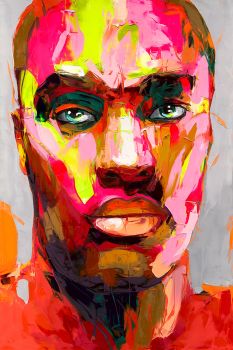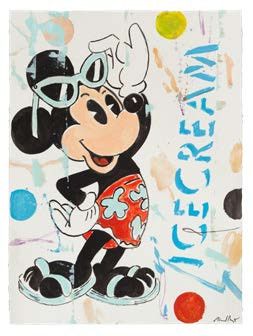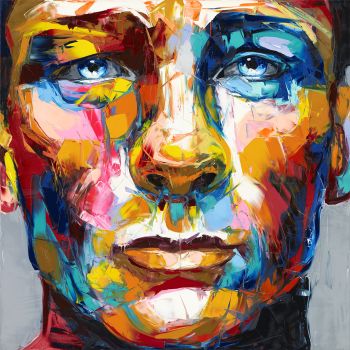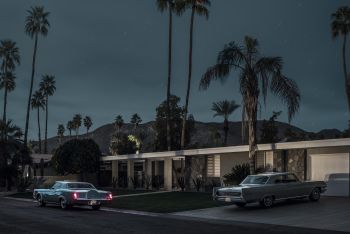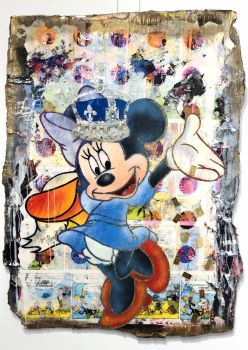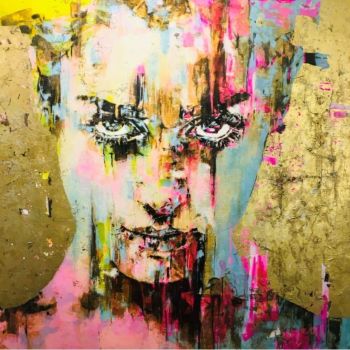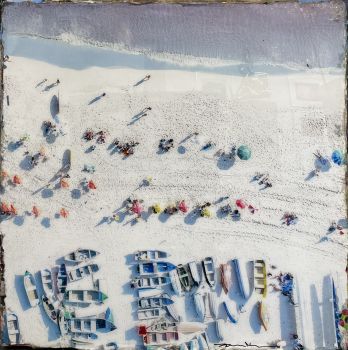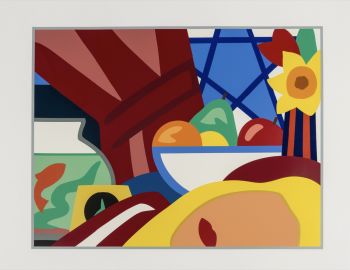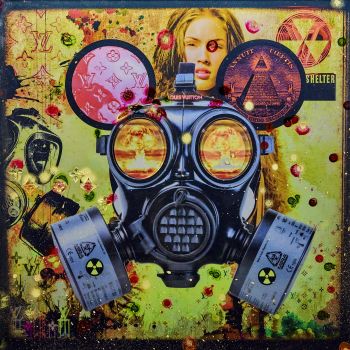Pop Art Prints: a media tycoon’s transformation into a serious art collector
The British Pop Art movement unfolded during the 1950’s, still rooted in European traditions and therefore maintaining a certain level of charm and historical sensibility.
A Brief History of Pop Art (1950s – 1970s)
The movement quickly made its way towards the United States where anything that was mainstream proved itself a source of inspiration, in light of the age of freedom, marked by the sexual revolution and the emancipation of women.
The artists we now consider art historical heavyweights sometimes took their subjects directly from everyday life, by tearing photographs from newspapers and compiling them into a collage. Even existing objects, deemed “ready-mades", were employed as works of art.
“Art is what you can get away with.”
– Andy Warhol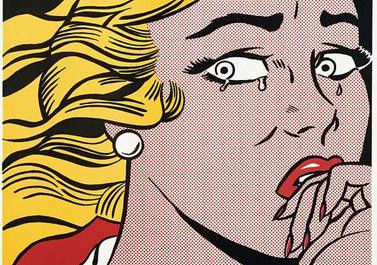
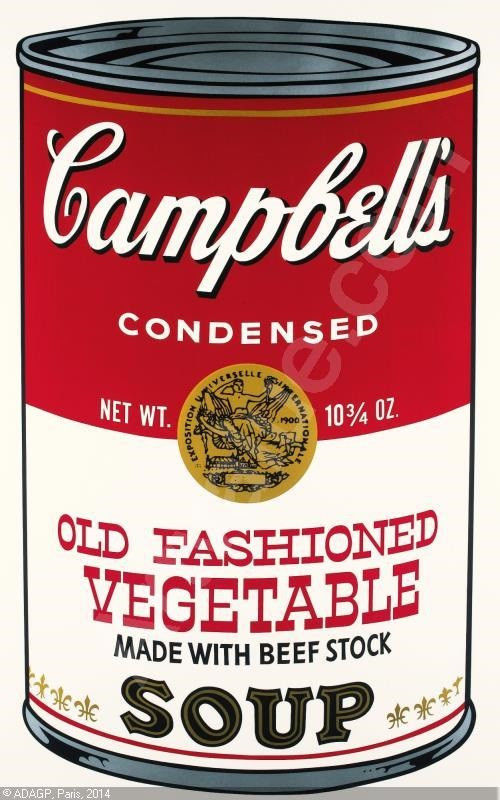
Roy Lichtenstein, Crying Girl, 1963 & Andy Warhol, Campbell's Soup II, 1969.
Members from the Independent Group, including Richard Hamilton and Eduardo Paolozzi, began with a recognizable yet uncomplicated manner of painting, setting aside any complex theories.
Following the 1961 exhibition Young Contemporaries, which provided a major breakthrough for David Hockney and Peter Blake, among others, the Pop Art movement caught on in the US. It was regarded as a counter reaction to the much more serious and profound abstract-expressionism period, which had prevailed up until that point.
Famous members of the American group of artists included Roy Lichtenstein, Tom Wesselman, Robert Rauschenberg and Andy Warhol, of which the latter, a poor Slavic immigrant, could be considered the embodiment of the American dream: ‘from beggar to millionaire’.
Cartoon images transferred onto canvas with oil paint, such as Crying Girl (Lichtenstein), and Warhol’s silk-screen print productions of Campbell’s Soup seemed incomprehensible to traditional art lovers at first. Pop Art embraced, in the words of Lichtenstein, ‘the most shameless characteristics’ of contemporary culture.
Nevertheless, within the next few years Pop Art flourished into an omnipresent artistic phenomenon on both sides of the Atlantic ocean.
Lex Harding
In the run-up to the exhibition Pop Art Prints of Andy Warhol & other PopArtists, Gallerease visited the initiator, media tycoon and seasoned collector, Lex Harding at his home in the Netherlands.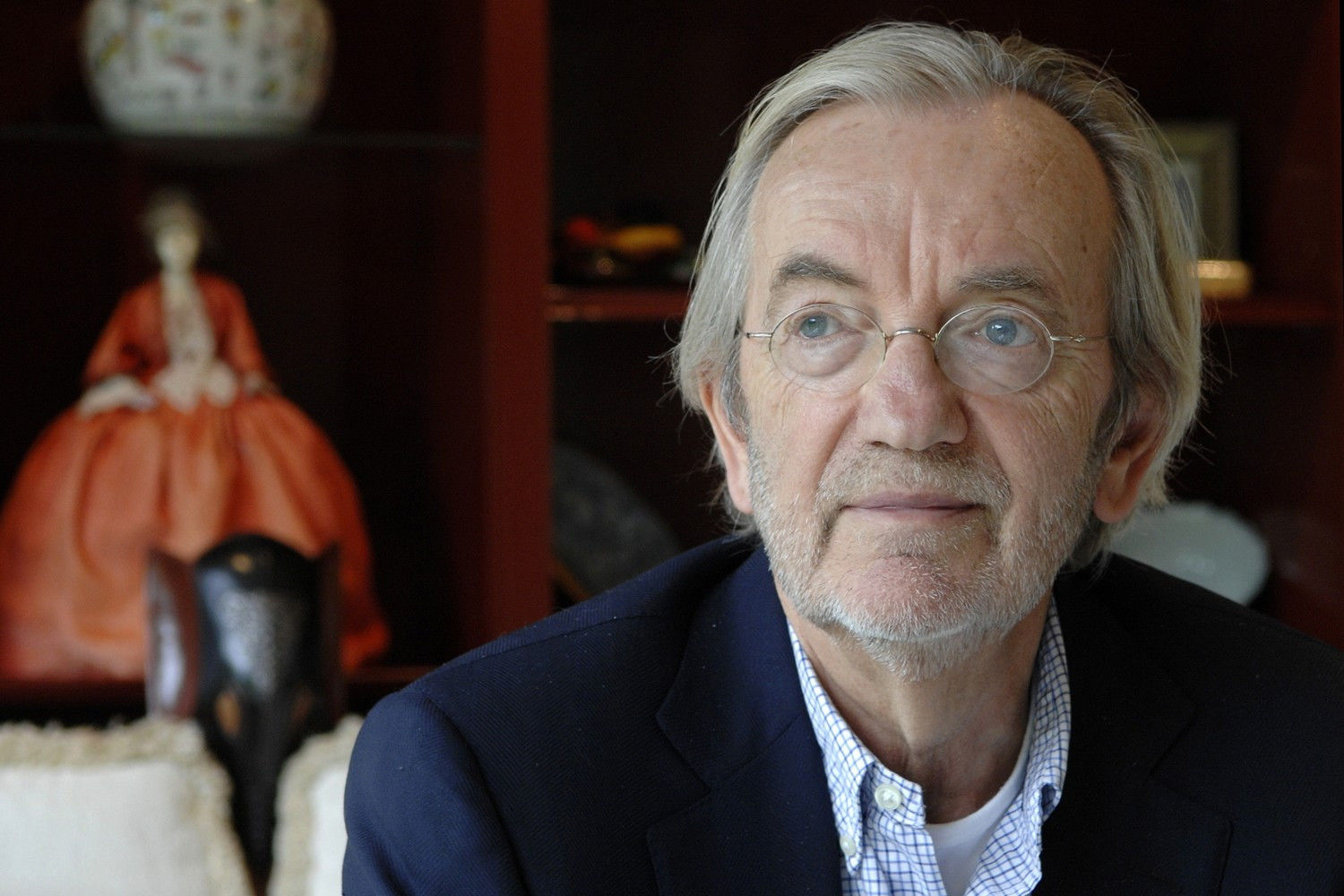
Lex Harding.
[G]: What can you tell us about how the Pop Art prints collection, currently consisting of more than 150 pieces, was formed?
LH: "When I bought this house at the end of the 90’s and started decorating it, my focus was not on filling the walls. I could simply not afford to put up expensive pieces. Shortly after, I encountered a financial windfall which allowed me to dedicate myself further to my art collection.
My taste had developed from old masters towards figurative art and finally into the direction of impressionism. A common thread didn’t really exist. At a certain point in time, I had a conversation about collecting art with Sandra Reemer. She and her husband, Freddi Bolland, own a large collection and knew a lot about the practice so they helped me on my way. Her most important rule was: if you really want to build something up, then you need to focus on one thing."
In 1985, Warhol immortalized the 'Reigning Queens': the four ladies that sat on the throne at that moment in time. The series of silk-screen prints that features their four portraits in varying colours (Beatrix of the Netherlands, Elizabeth II of England, Margrethe II of Denmark, and Ntombi ‘Great She-Elephant’ laTfwala of Swaziland) became a huge success.
Warhol himself was most happy with Queen Beatrix’s portrait. He stated: "Do you think these are my masterpieces? Queen Beatrix is! That’s the one I like the best because she is the best looking of the bunch."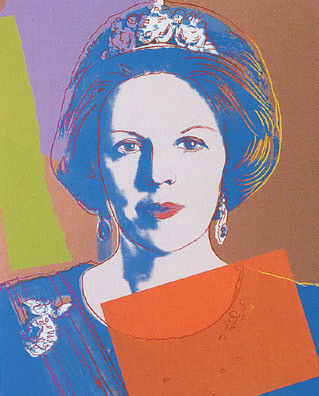
Andy Warhol, Queen Beatrix, 1985.
LH: "I had bought my first Beatrix at the end of the 90’s and started to consider what direction I was going to take from thereon. I liked Pop Art, but I found it so normal at the same time. I grew up with it. Following Beatrix I delved a little bit deeper and came to the conclusion – partially through Sandra’s influence – that this was the way forward."
The life of media tycoon Lex consisted of discovering and playing hit songs for many years. Perhaps this is what drew him to Warhol, who effectively did the exact same thing by mass-producing silk-screen prints and paintings. The Pop Art Prints of Andy Warhol & other PopArtists exhibition has been set-up completely in the style of Andy Warhol, including a screen printing machine and 60’s ambiance; the Factory brought back to life.
Lex Harding was definitely not lying when he said "when I start something the end is nowhere in sight"; the collection currently consists of more than 100 artworks by Warhol, screen prints and works on paper. Aside from Warhol, Lex also collects Lichtenstein (which is harder to find because he produced less), Keith Haring, Tom Wesselman, Peter Phillips, John Wesley, Richard Hamilton and other Pop Art related.
“If you want to know all about Andy Warhol, just look at the surface of my paintings and films and me, and there I am. There's nothing behind it.”
– Andy Warhol
Unfortunately, the trafficking of fake silk-screen prints has flourished since the extreme increase in market value. Aside from the individual prints, that will nowadays pass for 20,000 to 30,000 euros at auction, a complete portfolio might pick up around one and a half million euros. Not even mentioning the single copy, like Silver Car Crash (Double Disaster).
This painting from 1963 became the most expensive painting by Andy Warhol ever sold when it crossed the counter for 105.4 million US dollars. The 1964 Lichtenstein painting Nurse, that was first sold in 1995 for 1.5 million US dollars, was sold again in 2015 for a whopping 95 million - Which implies a capital growth of +6,055%.
However, these records were just recently blown away when Masterpiece, another painting by Lichetenstein that had hung in philanthropist Agnes Gund’s Upper East Side apartment for many decades, went up for sale. It recently sold for an amazing 165 million US dollars, with all proceeds going towards the Art for Justice Fund. The painting now belongs to the top 15 most expensive paintings ever sold.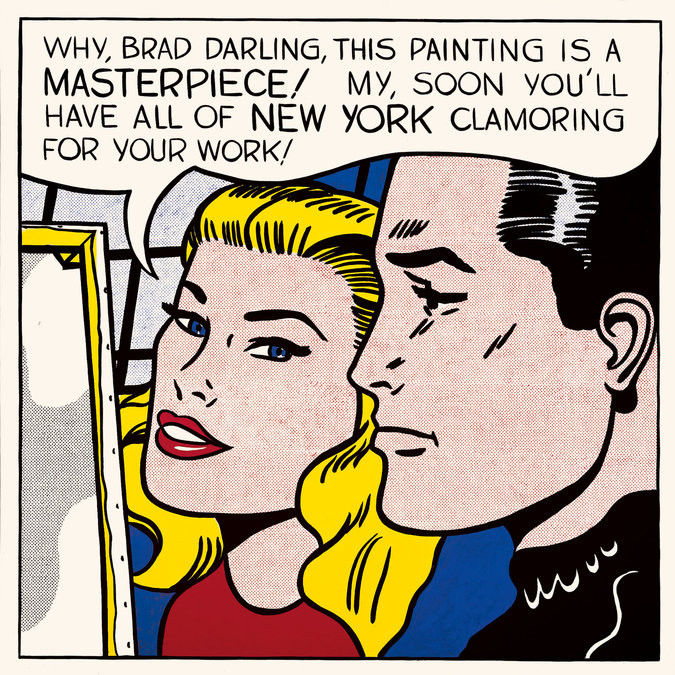
Roy Lichtenstein, Masterpiece, 1962.
[G]: Pop art is prone to falsifications due to its popularity and severe increase in value. How do you protect yourself from counterfeits?
LH: "When in doubt, I always call in the help of experts. As of day one I have solicited the advice of extremely competent art dealers such as the Utrecht-based Bas Meijer, Nico Delaive and the Mia Joosten art dealership. Aside from this, I only buy from renowned auction houses and art dealers."
[G]: What’s left on your wish list, considering the already impressive size of your collection?
"I recently completed the Mick Jagger series. They don’t all have the same serial numbers though, so if I ever get the chance I will try to swap them all for the same serial number. Very high on my list is Tomato Soup from the Campbell’s series; the only one I am still missing.
I am also still searching for the $1.57 Giant Size record sleeve with the corresponding record that has interviews with Pop Art artists on it, made during an exhibition in ’63. In my opinion, this sleeve marks the beginning of American Pop Art, and especially the beginning of Warhol’s oeuvre."
[G]: What motivated you to share your collection with the rest of the world?
LH: "I walked by the Beurs van Berlage one day and saw that there was an exhibition featuring Banksy, so I decided to pay a visit. When I walked around inside I was really impressed with the space. I figured that even though I had built up a nice collection, I only showed it to my friends every now and then, so it would be nice to put it out there for the whole world to see.
After inquiring at the Beurs van Berlage, I found out that such an undertaking comes at a hefty price. Furthermore, a company holding had to be established because I then had to consider my insurance needs et cetera, which took me at least 6 months of fulltime preparation, including all the marketing and cataloguing involved.
One of the main principles of the exhibition is to emphasize the strong ties between Pop Art and the Netherlands. One example, aside from the screen prints of Beatrix, is a photograph of Andy Warhol that was taken by Dutch photographer Patricia Steur."
“Being good in business is the most fascinating kind of art. Making money is art and working is art and good business is the best art.”
– Andy Warhol
For more, available works of Andy Warhol, Keith Haring or pop-art in general have a look at our collection at Gallerease!


